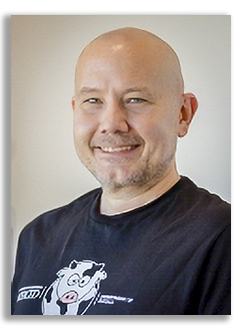
Abstract
What happens when two quantum dots are placed close together? The answer is far from trivial. These nanoscale artificial atoms do not simply coexist—they interact, influencing each other’s quantum states in ways that can be harnessed for both fundamental studies and technological advancements. By carefully engineering these interactions, we can probe the underlying physics of semiconductor quantum systems while also unlocking new functionalities for quantum-enhanced applications. The ability to tune electronic states and optical transitions in-situ over tens of meV allows for controlled coupling between various excitations of the solid-state system, including spin states, phonons, and mechanical motion.
In this seminar, I will explore the unique properties of coupled quantum dots and their advantages in quantum photonics and sensing. I will also discuss our ongoing efforts to extend these principles to more temperature-robust platforms, such as colloidal quantum dot assemblies and atomic emitters embedded in two-dimensional van der Waals materials. These systems, developed through molecular templating, chemical vapor deposition, and electrochemical intercalation, promise new opportunities for quantum light generation, tunable interactions, and scalable photonic architectures beyond cryogenic constraints. Beyond applications, these solid-state quantum systems serve as controllable testbeds for fundamental physics. In particular, they provide a platform for exploring the scalar Aharonov-Bohm effect in both electrical and gravitational contexts, where periodic driving is predicted to reveal key quantum phase effects. By leveraging the properties of coupled quantum emitters under such periodic driving, we can gain new insights into the coherence, gauge potentials, formation and evolution of Floquet states.
Click here to see all available video seminars.
Click here to go to the SPREE HOMEPAGE.
Brief Bio
Dr. Michael Scheibner is an Associate Professor in the Department of Physics at the University of California, Merced, where he is currently directing the Venture for Innovation in Self-assembly and Integration of Optoelectronic Nanostructures Partnership for Research and Education in Materials (VISION-PREM). Since joining UC Merced in 2009, he has played a key role in advancing semiconductor optics and quantum materials research, contributing to the university’s rapid ascent to Carnegie R1 classification within just 20 years of its founding in 2005.
Dr. Scheibner earned his M.Sc. in Physics from the University of New Mexico, where he conducted research in both astronomy and semiconductor optics. He then completed his Diplom-Physiker and doctoral degrees in Physics at the University of Würzburg, Germany, focusing on the dynamics of locally interacting spin carriers in low-dimensional semiconductor structures. As a postdoctoral researcher at the Naval Research Laboratory in Washington, D.C., he began exploring controlled coupling in quantum dot systems. His current research explores the properties of solid-state atom-like coupled quantum emitter systems to develop and advance the physics behind quantum-enhanced technologies—particularly for sensing, quantum communication, and information processing—and to probe fundamental concepts.
